This project was a geometrical challenge for the agency. The objective was to build a detached house for a family with two children and a dog in an area of suburban housing in Cachan (south of Paris), on one of the town’s last few buildable plots.
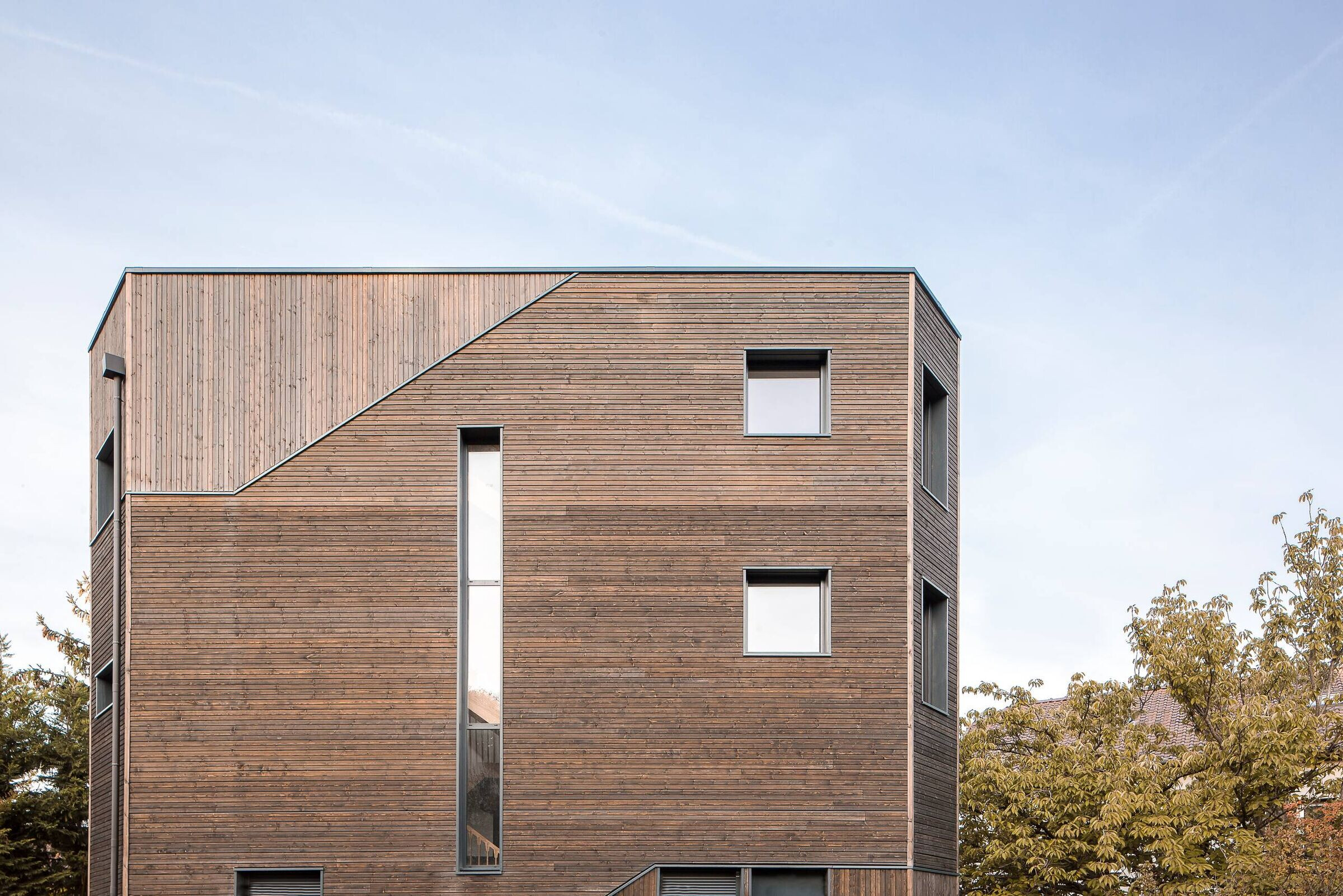
The site presented a few constraints due to its irregular quadrilateral shape; it was also bordered by a street, a path and a car park. The rules on non-constructible strips around buildings imposed a restriction of 43 m² of triangular ground floor space, and the house could only reach a maximum height of three storeys. Its maximum potential volume would give it a slender aspect that would make it look like a turret. The choice of a prismatic shape enabled us not to disrupt any existing perspectives as we did our utmost to maximise volume within this constricted space.
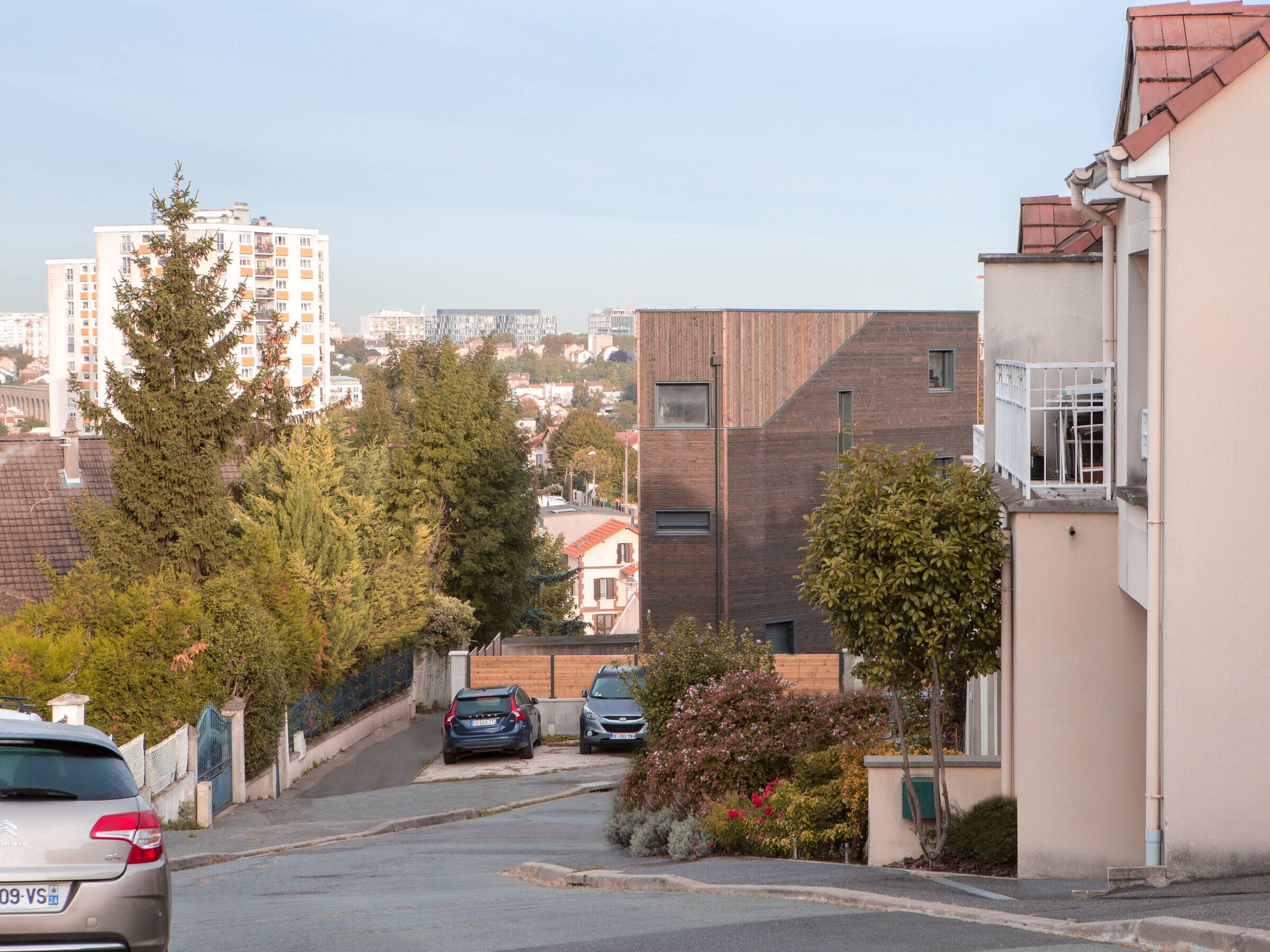
Maximum optimization
As it required a lot of space, vertical circulation was a challenge. We optimised by placing it in the middle of the building and creating semi-level floors staggered in-between the main floors. This strategy enabled us to avoid any unnecessary landings and made the ceiling height in the living room very generous. The entire floor surface thus came to 85 m². The structure of the house developed naturally around the staircase leading to a south-facing terrace that we made accessible via a skylight, designed to let a lot of light shine through to the centre of the house. When open in the summer, it would also make the house cooler by convection.
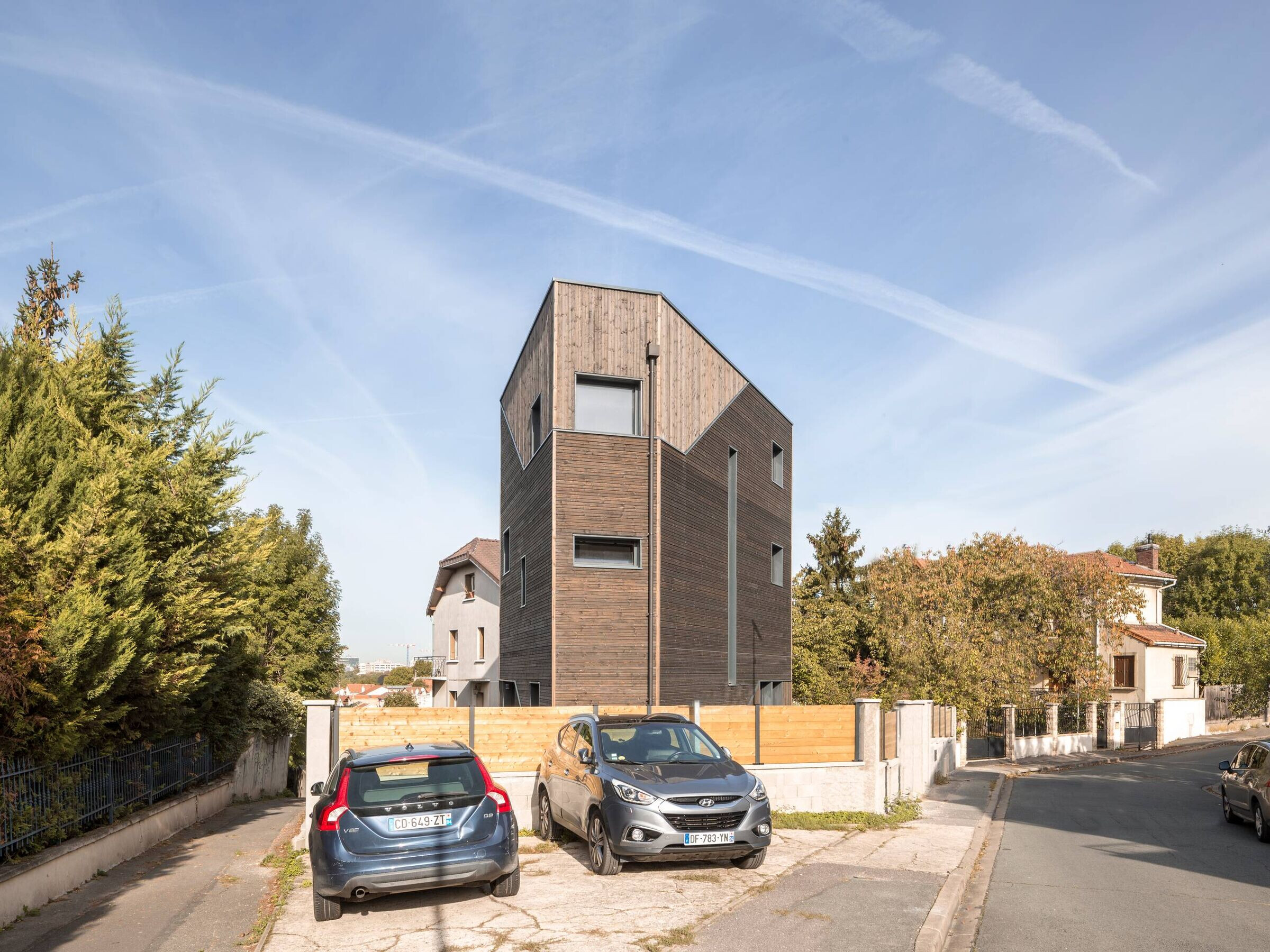
The wood material
The structure of the house itself, made out of a pre-made wood frame, was held by Techno Pieuxaugered piles. Upon their arrival on site, the precast components were assembled by crane. This strategy made it possible to have a dry building site that was finished quickly. The exterior of the house was made of pre-greyed wood cladding sheets with varying orientations so as to reflect the different inhabited spaces within the house, thus manifesting the differences between floors in the façade.
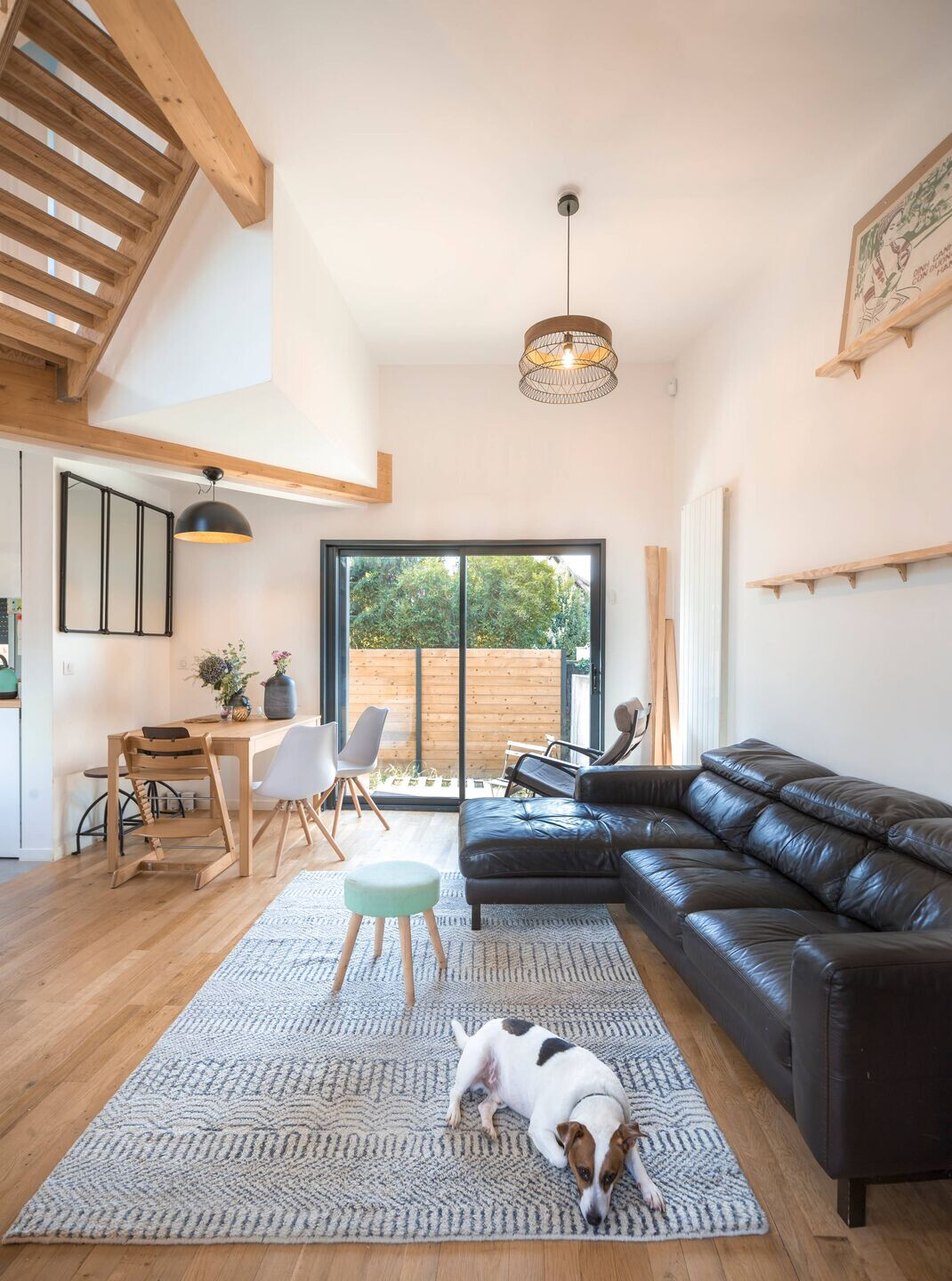
The staircase was made of five completely distinct flights, and each linked landing faced a different direction. This staircase was built by the digital carpentry workshop Super Cube, based in the WoMa Fab Lab. Thanks to their digital production tools, the crafts- people were able to precisely cut the components that were then transported to the site for their assembly. This also enabled us to make an elegant variable-inertia guardrail, making structural performance optimal and ensuring an economical use of wood resources.
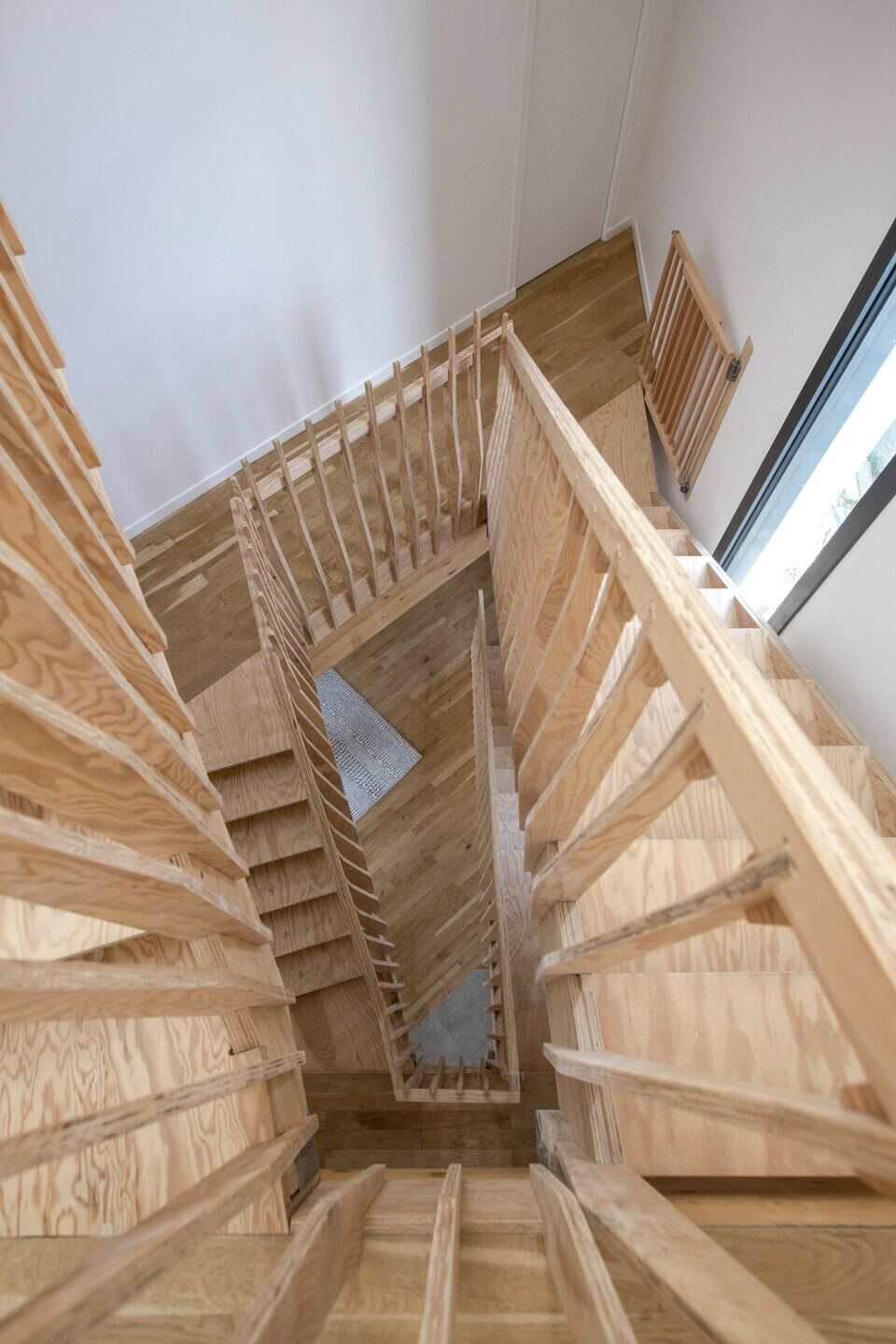
The Facet project thus demonstrates the benefits of using local economical solutions that reduce building time and offer bespoke results. It also shows how architectural richness can be borne out of rare spatial and geometrical constraints.
Architecture
- Renovation: respect for existing structures with a view to improve their architecture and functionality quality
- Collaborative design / concertation / transient
temporary programming
- Scale1 systematic prototyping (Fablab / makers)
- Enhancement of thermal performances - Experience
with Plan Climat, CERQUAL certifications, etc.
Circular Economy
- Digital reclaimer - short-cycle local digital production from reused materials
- Active member of the “Fab City” network of interconnected cities
- Finder of constructive and regulatory solutions and
innovative processesonmaterials reuse
- User of biosourced materials









































